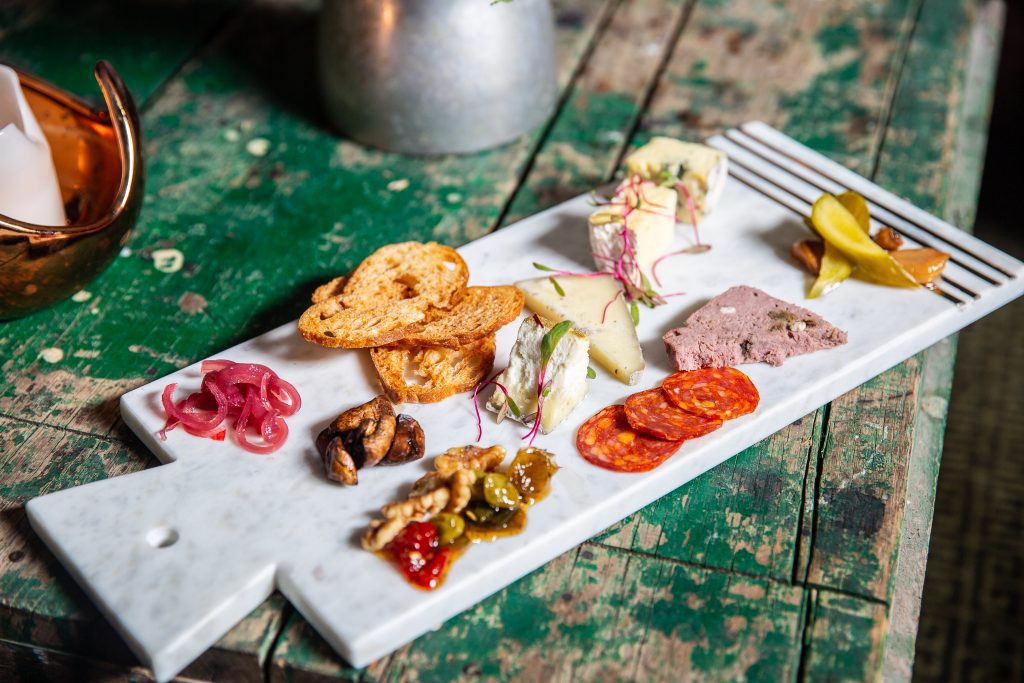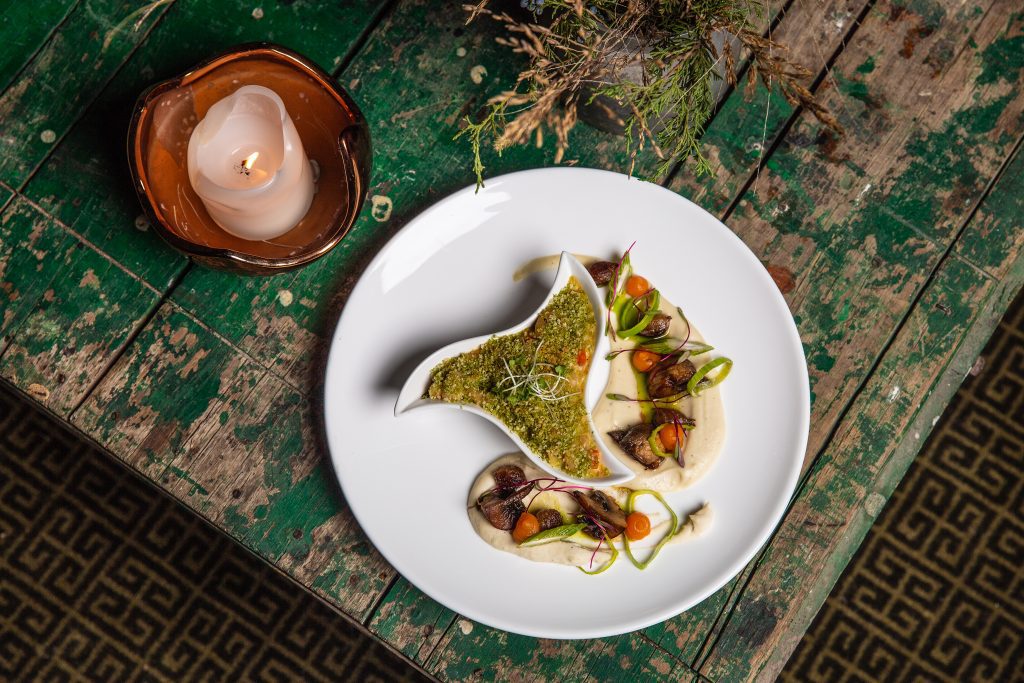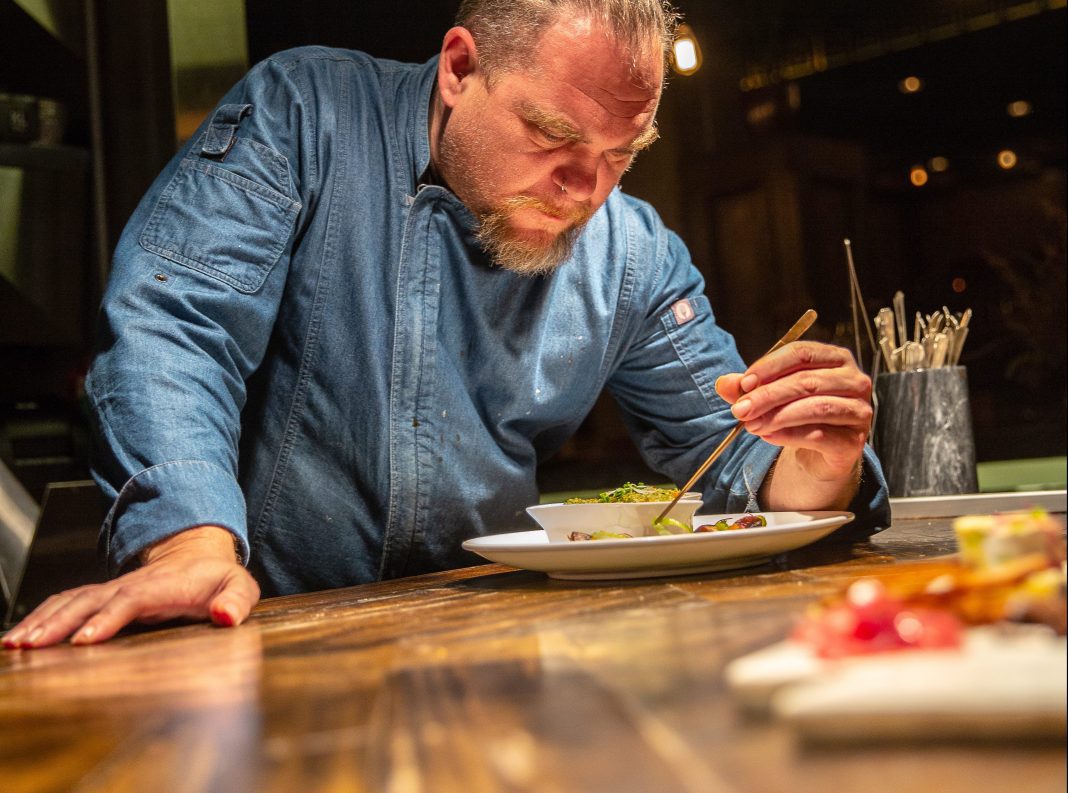
In a few short blocks of glorious, gilded spires, Boston Avenue epitomizes downtown Tulsa’s glory days as Oil Capital of the World. As the sun sets on a wintry evening, the century-old palaces seem haunted – a place of tunnels and secrets.
Just west of Boston, an alley runs north toward Fifth Street, hemmed in by tall brick cliffs. You look for a tiny door, marked only by a signboard with a knife and goblet. Open that portal and, like Harry Potter at Platform 9¾, you pass into a magical world.
Down a narrow gray staircase you go, until suddenly you enter an enormous room that – with its 18-foot-high ceiling, Art Deco chevrons and Greek meander wall motifs, all dimly glowing in the light of chandeliers – seems like a survivor from a bygone age.
“Actually it was built in the 1950s,” Greg Donnini says of the building that houses Boston Title & Abstract restaurant.
Donnini – tall, voluble and kindly – and his partner, chef Paul Wilson, seem to have stepped out of an epic tale like The Lord of the Rings.
“When Paul and I found it, it was an empty concrete shell flooded with a foot of water,” Donnini says. “I designed every inch of this place. There were lots of speakeasies along Boston Avenue in the 1920s, and I wanted it to look as if this was one of them, abandoned and just discovered a few days ago.

“We don’t advertise; you have to work to find us, and that’s part of the cachet.”
There are eye-catching decorative touches everywhere (and a lot of floor space with only 12 tables), but inevitably your eyes are drawn to the front.
“It’s an auditorium,” Donnini says, “and this is the stage.”

There, Donnini presides over a long bar, and behind its left side is the kitchen, the domain of Wilson, who’s in constant balletic motion. He chops. He stirs. He flits from stove to counter, pours sauce from a pan, pauses to swig water, checks a bubbling pan on the stove, confers with four servers and goes back to the pot.
“I do simple stuff,” Wilson says as he shrugs, while making it seem easy – simplicity born from two decades of hard work behind restaurant stoves.
And simple never means predictable. There are always traditional French bistro classics like coq au vin or cassoulet (“I put my own spin on them,” Wilson says), but there are also envelope-pushing weekly specials like wild boar chops with pear compote and lentils; lamb with smoked grapes; and even, for one week only, kangaroo chili Frito pie.
“Paul loves to cook,” says Donnini, “and he is fearless.”
A few months ago, successful chefs from all over the country (including Wilson) converged on New Orleans. There, they attended the memorial service for their mentor, Rene Bajeux, a titan of French cuisine. Wilson worked with Bajeux for more than five years and learned the rigorous French technique that is the backbone of all his cooking.
Wilson grew to love French rural cuisine, the traditional peasant dishes. He was taught to achieve balance in every dish. He developed an openness to all cooking styles, ingredients and national cuisines, and that’s why, when cooking lentils from India, he might throw in Thai bird’s eye chilies and a bundle of herbes de Provence.
Yet the most important technique he garnered from Bajeux is interpersonal.
“I learned a new style of management,” Wilson says. “A restaurant is a team and not just one chef. I hate the distinction between servers and kitchen staff. We are all one big family.”
And as if on cue, one by one and without being asked – because the kitchen is short-staff tonight – waiters drift over and help with the saucing and plating.
























